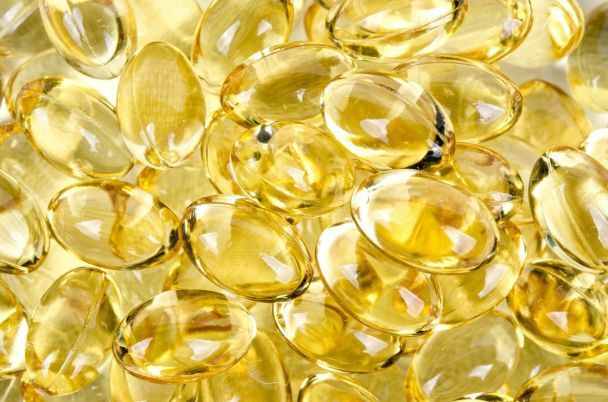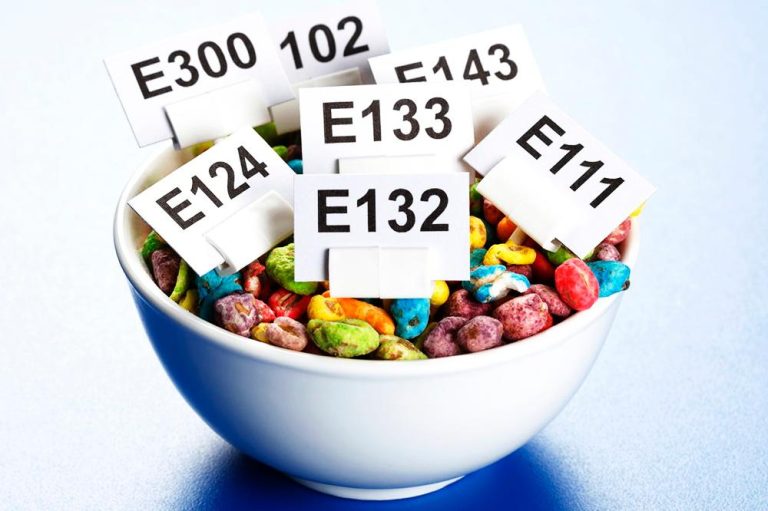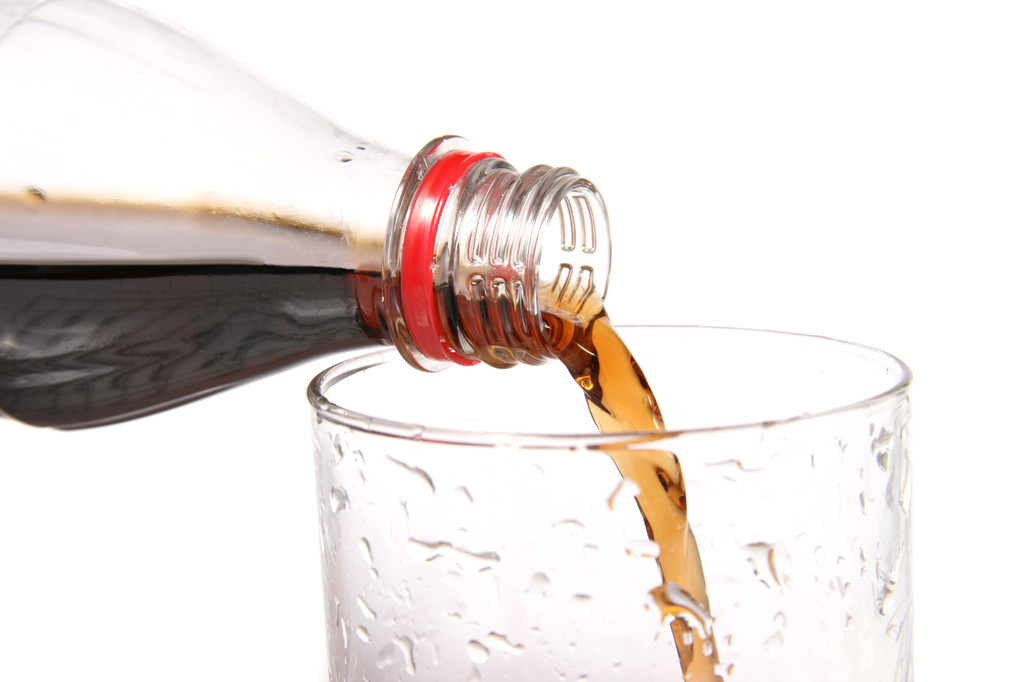Additives and E numbers are unpopular with consumers. We prefer to reach for groceries in the supermarket that can do without. But “free from xy” is sometimes window dressing: Additives are increasingly being hidden behind friendlier terms.
Clean labeling is the name given to the food industry’s efforts to keep the labels as “clean” as possible: the products should at least be “free from” on the paper of the list of ingredients, because that’s what customers prefer to buy: free from, for example, dyes, preservatives, Flavours, flavor enhancers, E numbers, sugar and fat.
The consumer is suggested that the product is healthy, natural and free from unwanted additives. But the manufacturers are cheating: unpopular additives are simply replaced by alternatives that have a similar effect but do not have to be labeled as additives. We show you what to look out for.
“Free from flavor enhancers” – thanks to seasoning, tomatoes or soy

The flavor enhancer glutamate is held responsible for many ailments, diseases and symptoms. The solution of the food industry was initially: “yeast extract”. That sounds innocent, but it is also a flavor enhancer – read also Is yeast extract the new glutamate?
During our research in the supermarket, we discover the Knorr Fix Rahm mushrooms with the promise “without flavor-enhancing additives” – and discover the flavor-enhancing ingredient yeast extract in the list of ingredients. From a purely legal point of view, this is correct: yeast extract is not considered an additive. We still feel cheated. Consumer advocates agree: the consumer advice center in Saxony has already sued Unilever for such promises – but without success.
Many consumers have now heard about the trick with yeast extract, which is why other ingredients are increasingly being used: soy protein, tomato powder or seasoning do not have to be specified as flavor enhancers on the list of ingredients – despite their flavor-enhancing effect.
But what exactly is “spice”? Although “seasoning” does not have to be specified as an additive, it is anything but natural: it is produced by chemically or enzymatically splitting protein from vegetable raw materials such as rapeseed, corn, wheat or soybeans. The liquid, powdery or solid seasoning contains large amounts of protein-bound glutamic acid and therefore has a taste-enhancing effect in the food. And that is often what is wanted.
A few years ago, Maggi’s spaghetti Bolognese still contained the ingredient “spice (from wheat)” instead of flavor enhancers. Today (as of November 2020), the list of ingredients includes yeast extract and various spices.
When we asked, the company gave the following answer: “The revision of the products is a long-term process in which a wide variety of aspects have to be taken into account. It’s about the individual ingredients and their relationship to each other, the nutritional values, the technological feasibility and the delicious taste. Today, for example, we do not use flavor-enhancing additives in over 95% of Maggi products. We do not use a claim for this on our products. […] In line with consumer taste preferences, we have gradually optimized the product over the past few years and have continuously increased the tomato content to 41.5 percent.”
Free from artificial colourings: thanks to beetroot, currants and algae powder
Many food manufacturers are now doing without questionable artificial colorings such as the E number E110 – yellow-orange S. However, colorful candies, gummy bears or drinks are often only as brightly colored as children love thanks to added colorings.
“Free from artificial colors” does not necessarily mean that the product contains no colors at all. The industry simply replaces the synthetics with colored concentrates or powders made from fruits and vegetables.
This deceives many consumers: As a study by Lebensmittelklarheit.de from 2013 shows, 60% of consumers assume that a strawberry yoghurt “without colouring” comes only from strawberries and around 57% do not expect that other coloring foods are used.
Beetroot juice in cherry yoghurt or algae powder in wasabi peanuts are not considered coloring agents and therefore do not have to be labeled as such.
Yes: Natural dyes are better than artificial E numbers. Nevertheless, it is window dressing, because the visual beautification often only feigns a higher quality for us customers. The bright red Zott Sahne Yoghurt Mild Amarena-Kirsch, for example, leads to the assumption that it contains a particularly large number of cherries thanks to the “coloring beetroot juice concentrate”.
The jelly raspberry flavor from Dr. Oetker contains three coloring ingredients: carrot concentrate, blackcurrant concentrate and hibiscus concentrate. However, both manufacturers have to be credited with the fact that the lists of ingredients refer to the coloring properties.
“Free from artificial flavors”
The note “free of artificial flavors” sounds good at first, but is misleading at second glance. Not all aromas are the same, and it is worth taking a look at the information in the list of ingredients:
“Aroma” is chemically produced in the laboratory.
“Natural flavor” or “natural flavoring” comes from a natural raw material, but not necessarily from a food. It can also be obtained from plant and animal raw materials or microorganisms such as moulds. Even the production with the help of genetic engineering is possible. Examples of natural flavors are vanillin, which is obtained from the wood waste product, or peach flavor from moulds.
“Natural chilli aroma” – the Kühne “Hungarian gherkins” contain at least 95 percent real chillies. Of course, this also applies to other spices, vegetables or fruits.
Preservative ingredients instead of preservatives
A food “without preservatives” often contains substances with a preservative effect, despite the promise on the packaging. There are other ingredients that also extend the shelf life: antioxidants, acidifiers such as acetic acid, but also mustard seeds, sugar, salt, vinegar, spice and fruit extracts have a preservative effect.
During our research in the supermarket, we came across Kühne’s “Carrot Salad”. Carrot salad – that sounds delicious and healthy. A look at the list of ingredients shows: Despite the note “no flavor enhancers or preservatives added”, the carrot salad contains a large number of preservative ingredients: brandy vinegar, sugar, apple cider vinegar, salt, lemon juice concentrate. In addition, the antioxidants citric acid and ascorbic acid, which, as antioxidants, are not considered preservatives under food law, but are probably added to the carrot salad for precisely this purpose.
The acids protect against spoilage through reactions with oxygen: such an oxidation process is, for example, the browning of sliced apples. What’s also odd is that this “flavor enhancer-free” carrot salad contains natural carrot flavoring.
Maltodextrin, maltose and fructose instead of sugar
Every little child knows that sugar is unhealthy and makes you fat. That’s why the food manufacturers cheat and replace the sugar on the ingredients list with other sweetening ingredients.
Behind terms like glucose syrup, maltodextrin, maltose, glucose, sucrose, fructose, dextrose, the fattening sugar “hides”.
And if products are really sugar-free, then sugar substitutes are often used: The “Corny free chocolate” bars “without added sugar” primarily contain the sweetener maltitol – which can lead to diarrhea, abdominal pain and flatulence if consumed in large quantities. A good swap?
Processing Aids: Wine and juice with hidden animals
The connection between wine and gelatin and why juice is often not vegan is another mystery of the food industry. We’re used to clear juice and wine. But the drinks are originally cloudy, the suspended matter is only filtered out thanks to clarifying agents.
In many cases, gelatine obtained from the bones and skin of animals is used for clarification. There is no mention of gelatin on the ingredients list. It is considered a processing aid and not an ingredient.
A Foodwatch study showed that more than every third apple juice contains “hidden animals”. You can only be sure that no gelatine was used if the product bears the vegan flower.
In addition to gelatine, there are other substances that do not have to be included in the list of ingredients – the so-called processing aids facilitate or accelerate the industrial production of food.
Magnesium stearate, for example, ensures the pourability of cocoa powder, solvents remove bitter substances from coffee or tea and, thanks to anti-foaming agents, beverage production runs smoothly. Because the substances no longer have any effect in the finished product, they do not have to be on the packaging. Nevertheless, residues of the auxiliary substances can often be found in the food.
What can you do?

If you don’t want to be fooled by the food industry and value natural and healthy food, you should take a look at the list of ingredients of the products more often in the future. Also read our instructions: Read the food ingredients list correctly.
Ultimately, however, many foods – including organic products – are industrially manufactured products on a large scale, which often cannot do without flavor enhancers, preservatives, sugar or their alternatives. Where organic may contain far fewer additives.
If you want to completely avoid all the hidden additives, there is no way around buying as little processed food as possible and cooking as much as possible at home.









